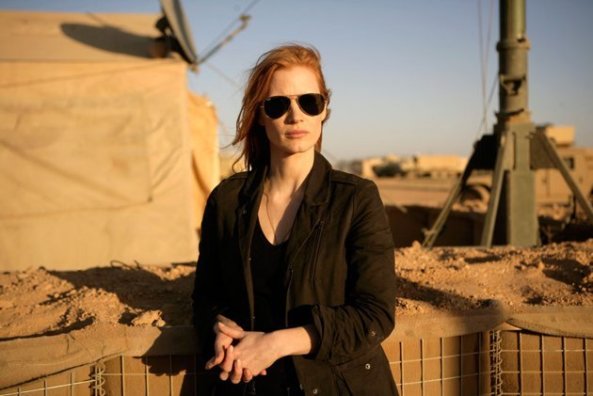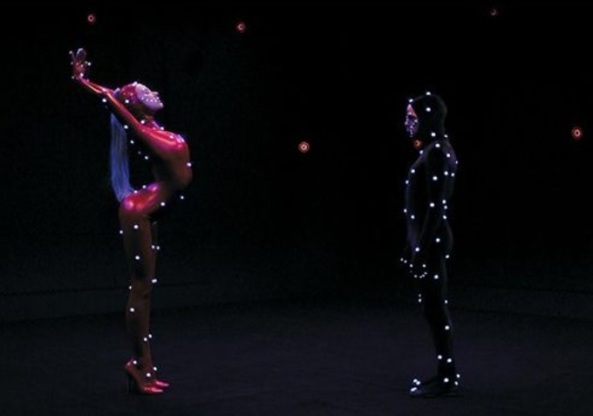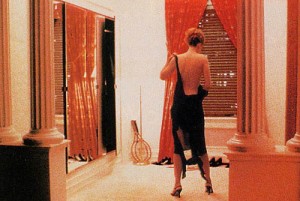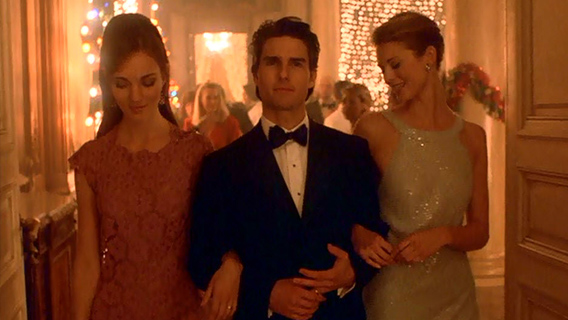‘Tis the awards season for many lists and nominations. I’ve had a lot of fun doing this column, but this is probably my last of this sort. Next week I’ll likely take off because of the holiday, and the following week I’ll put together an article of my final Oscar predictions, charting the ups and downs of certain films based on the preliminary predictions I’ve made each week since.
This is the point when most Oscar bloggers say that all that’s left are the Oscars. The Best of lists have started trickling out, the Golden Globes have been named and subsequently ignored and all the movies have been seen. You and I both know that last bit isn’t true, because I’ll likely miss “Zero Dark Thirty,” “Amour,” “On the Road,” “Not Fade Away,” “Searching for Sugarman,” “Rust and Bone,” “How to Survive a Plague,” “The House I Live In” and “The Gatekeepers” and “West of Memphis” before the year is out, and God knows I’m trying much harder than you to see these.
But nevertheless, I’ll cobble together a Best of the Year list myself along with some other fun features in the next few days. So for the last time, here’s this week’s roundup.
Golden Globe Nominations Announced
The Golden Globes have a tendency to be plain embarrassing. They’ll nominate something “The Tourist” to get Johnny Depp in attendance, and their ridiculous split between drama and comedy or musical means that nothing gets snubbed, except of course for things that are actually interesting. Last Thursday, “Lincoln” led the pack with seven nominations, and the only real surprise of a nomination were the multiple for “Salmon Fishing in the Yemen.” Okay, whatever, we’ll let you have that one.
Scott Feinberg’s analysis is by the far the best of them, mentioning what a big deal it is to see Nicole Kidman, Rachel Weisz, Joaquin Phoenix, Amy Adams, Richard Gere, Emily Blunt, Ewan McGregor and Leonardo DiCaprio, although he probably lends a little more weight to the Globes than I do. The biggest, yet predictable omissions included “Beasts of the Southern Wild” and “Amour.”
What really piqued my interest in Feinberg’s analysis was one statistic that said people who are nominated for a SAG award, Critics’ Choice and Golden Globe all go on to an Oscar nomination, and he’s got a list of five in the Best Actor race already. Those names are Bradley Cooper, Daniel Day-Lewis, John Hawkes, Hugh Jackman and Denzel Washington. You tell me who’s missing. (Full list via The Race)
Hair and Makeup Category Shortlisted
Here’s the list of the seven films advancing in the newly revised Makeup category that now also includes work for hair dressing.
“Hitchcock”
“The Hobbit: An Unexpected Journey”
“Les Misérables”
“Lincoln”
“Looper”
“Men in Black 3”
“Snow White and the Huntsman”
The two big snubs here are “Cloud Atlas” and “Holy Motors,” both of which involve characters going through multiple performances and appearances, and “Holy Motors” especially calls attention to its makeup. I also would’ve liked to see “The Impossible” on this list for the amount of blood stained clothes and Naomi Watts looking ghastly that’s in that movie. (via Oscars.com)

“Zero Dark Thirty” selected by Chicago Film Critics
Hailing from Chicago myself (I didn’t vote. Don’t flatter yourself), I always find these interesting. Announced on Monday, the Chicago critics selected “Zero Dark Thirty” as their winner for Best Picture while granting it four other awards. “The Master” came in second with four awards. This is an interesting list, one that goes against the grain a tiny bit by selecting “The Invisible War” as Best Doc and “ParaNorman” as Best Animated. The full list of winners is below. (Full list of nominees via CFCA website)
Best Picture – Zero Dark Thirty
Best Director – Kathryn Bigelow
Best Actor – Daniel Day-Lewis
Best Actress – Jessica Chastain
Best Supporting Actor – Phillip Seymour Hoffman
Best Supporting Actress – Amy Adams
Best Original Screenplay – Zero Dark Thirty
Best Adapted Screenplay – Lincoln
Best Foreign Language Film – Amour
Best Documentary – The Invisible War
Best Animated Feature – ParaNorman
Best Cinematography – The Master
Best Original Score – The Master
Best Art Direction – Moonrise Kingdom
Best Editing – Zero Dark Thirty
Most Promising Performer – Quvenzhane Wallis
Most Promising Filmmaker – Benh Zeitlin
New York Times Best of the Year Lists
If the New York Times sounds off on anything it’s a big deal, but what I loved about A.O. Scott’s and Manohla Dargis’s lists was the optimism brimming from them about the state of cinema, all this coming from a year where people have been mostly negative. Dargis didn’t rank hers, but Scott picked 25. They’re must-reads. (Dargis’s list and Scott’s list via NYT.com)
Manohla Dargis
Amour
The Deep Blue Sea
The Gatekeepers
Holy Motors
Moonrise Kingdom
Once Upon a Time in Anatolia
Searching for Sugarman
Silver Linings Playbook
Zero Dark Thirty
A.O. Scott
1. Amour
2. Lincoln
3. Beasts of the Southern Wild
4. Footnote
5. The Master
6. Zero Dark Thirty
7. Django Unchained
8. Goodbye, First Love
9. Neighboring Sounds
10. The Grey

New consensus emerges from critic polls
I feel Metacritic’s aggregation is fairly comprehensive in terms of evaluating the best movie of the year, but both Indiewire and Village Voice conducted their own critics polls and selected “Holy Motors” and “The Master” respectfully. It’s almost funny considering that it’s likely neither of those will be nominated for Best Picture (but we’ll hold out for “The Master.”) and the other consensus title, “Zero Dark Thirty,” may just win Best Picture. Indiewire also did a cut and dry determination of what the Oscar nominees would be based on their votes, and of the 10 Best Picture nominees, they selected six potential Oscar nominees. Here are the individual critic poll Top 10 lists:
Indiewire
- Holy Motors
- The Master
- Zero Dark Thirty
- Amour
- This is Not a Film
- Moonrise Kingdom
- Beasts of the Southern Wild
- Once Upon a Time in Anatolia
- The Turin Horse
- Lincoln
Village Voice
- The Master
- Zero Dark Thirty
- Holy Motors
- Moonrise Kingdom
- This is Not a Film
- Amour
- Once Upon a Time in Anatolia
- The Turin Horse
- Lincoln
- Tabu
Continue reading “Off the Red Carpet: Week of 12/12 – 12/19”
 The original Clint Eastwood adaptation of “The Beguiled” was a crazed, pulpy drama of sex and temptation. It’s a bit too nuts to take it truly seriously. That’s where Sofia Coppola comes in, whose gifts with minimalism can take even the wildest of subject matter and rope it into something contemplative and profound.
The original Clint Eastwood adaptation of “The Beguiled” was a crazed, pulpy drama of sex and temptation. It’s a bit too nuts to take it truly seriously. That’s where Sofia Coppola comes in, whose gifts with minimalism can take even the wildest of subject matter and rope it into something contemplative and profound.

 Saroo Brierly got separated from his family in India when he was just a boy and spent his whole childhood raised in Australia by a foster family. It wasn’t until he was in his 20s that he used Google to trace down a past he could hardly recall and a home he didn’t know would still be there.
Saroo Brierly got separated from his family in India when he was just a boy and spent his whole childhood raised in Australia by a foster family. It wasn’t until he was in his 20s that he used Google to trace down a past he could hardly recall and a home he didn’t know would still be there.





